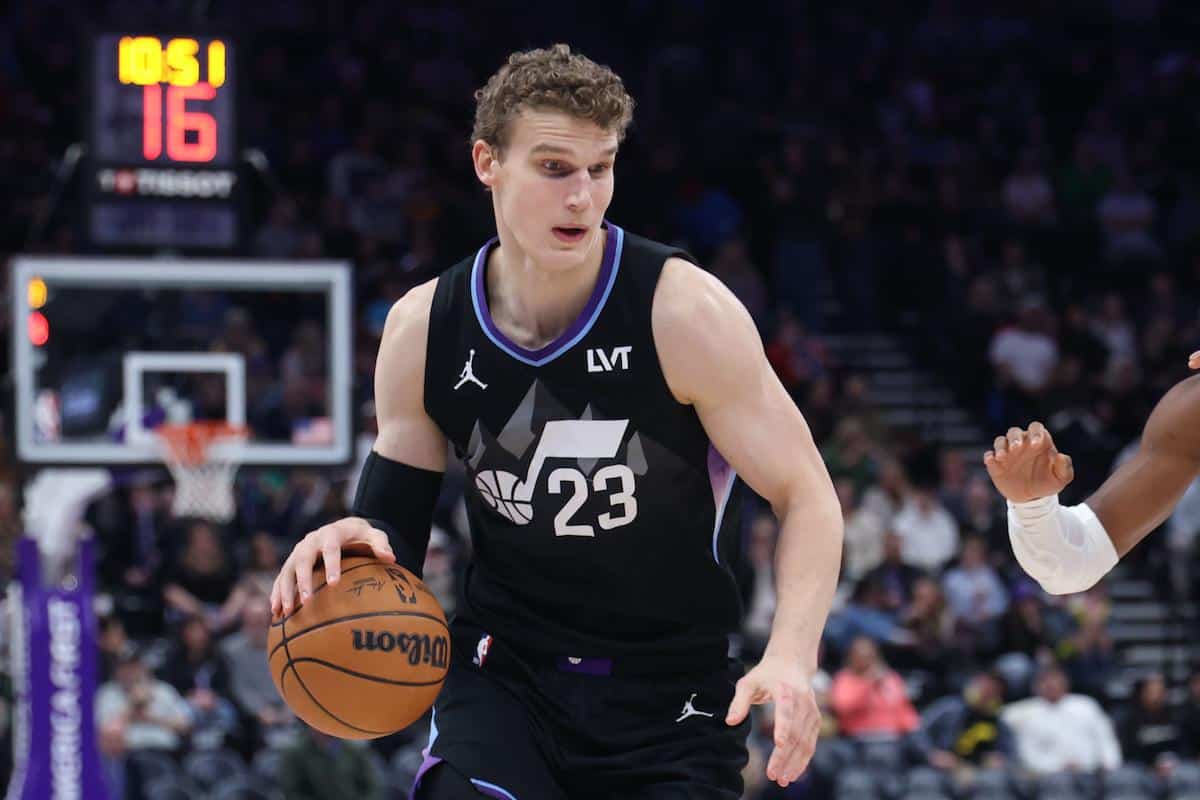Sunday’s matchup with the Brooklyn Nets saw Jayson Tatum outduel Brooklyn’s top star in Kevin Durant. The back-and-forth nature of the game was reminiscent of a postseason duel, with lead changes galore and excitement at every junction.
While it was Tatum’s success that proved to push the C’s over the top, the matinee also revealed one slight challenge for a ‘switch everything’ defense come playoff time: how to stop an opposing star such as Durant.
Frequently after a good game, we’ll see tweets such as this, which highlight the individual defensive performances of Celtics players who are incredibly strong on that end:
Derrick White matched up with Patty Mills on 10 possessions and gave up 0 points
He matched up with Kyrie Irving on 6 possessions and gave up 0 points
— Dan Greenberg (@StoolGreenie) March 7, 2022
Let’s push the validity of individual defensive stats to the side for a moment. Switching defenses are about the scheme and the entirety of a five-man unit being in sync to stop their opponents. As the old saying goes, “you’re only as strong as your weakest link”, and elite players or veteran offensive groups know how to hunt that weakness. With such great individual defenders emerging on the C’s such as Derrick White, Marcus Smart or even Tatum, constantly switching them off of superstars when a screen occurs may not seem like the smartest decision.
But in a switch-everything scheme, what are the superstar rules? Can the Celtics adjust to a nuclear performance from a high-scoring superstar who loves to isolate? Lastly, is there a benefit to practicing such a plan in the regular season, or is it best to play the cards close to the chest and not tip their hand before the playoffs?
First, we have to understand how the Celtics defense works ideally with their regular rotations. Ben Taylor of Thinking Basketball put out a fantastic YouTube piece this week on the tactics of the C’s defense:
The Cliff Notes version:
- High-IQ defenders like Marcus Smart and Al Horford can cover up some mistakes that naturally happen through switching
- Instead of switching around a smaller guy to protect him, they switch around Rob Williams to keep him closer to the basket/ as a help defender at the rim
- Boston rarely plays a weak link, so there are very few players to protect. Udoka seems comfortable letting guys like Grant Williams or Horford have their isolation space against superstars
There is less of a worry about how the Celtics will work against a superstar like Durant at the point of attack. Udoka’s comfort with switching comes from knowing that Robert Williams is standing behind the defense to protect the rim. On-ball defenders crowd the ball a little more to prevent clean jump shots, resulting in drives that are funneled more towards Williams.
Instead of worrying about who guards a guy like Durant at the point of attack, the C’s need to worry more about finding ways to keep Williams guarding help spots in the corners. Against Durant on Sunday, the C’s found out the hard way just what happens if a different player is on the backline.
Williams was placed on non-shooter Bruce Brown, who often hides in the corners or sets high screens. That would let Williams help off the non-threat on the perimeter and play his usual role as a lane-clogger and weak-side swatter.
Two different times, both out of dead ball situations, the Nets would walk up and put Brown on the wing and above the break. Timelord would roam off him, but instead of full double-teaming the driving Durant and forcing a kick to Brown, he let Durant attack the rim that was far less protected than normal:
Schematically, teams will recognize and find ways to consistently attack Boston here in the playoffs, challenging Timelord’s communication to stay low or finding a way to keep him high on the perimeter if he gets cross-matched in transition. It almost needs to be played like a zone in order to keep Williams on the baseline on every possession. Pre-switch it in many of these cases and he winds up guarding Seth Curry, a subpar matchup for the C’s considering how much movement Curry is involved in and the threat he is away from the rim.
The regular season reveals what a team thinks is the best version of themselves. The playoffs reveal how consistently they can play that way when opponents try to take them out of it. We’ll likely see an increased presence of non-switching during the playoffs, where guys like Smart, Grant and White all take the brunt of tough individual matchups so that Tatum and Brown rest more for offense.
There is a little downside worth considering, though. The Celtics have been a well-oiled machine lately. Adding wrinkles or exceptions to be aware of in a switching defense can slow down their processing ability. Instead of seeing a screen and knowing it will be a switch, some players will pause to read whether the screen is a switch or a different coverage. That split-second can be costly against great teams.
I’m a firm believer in the ‘if it ain’t broke, don’t fix it’ approach to coaching. As such, the C’s didn’t need to adjust on Sunday against the Nets, and likely won’t throughout the regular season as they steamroll their way towards the playoffs. But in the back of our minds, we ought to pay attention to the next move on the chessboard and what our counter to that might be.






